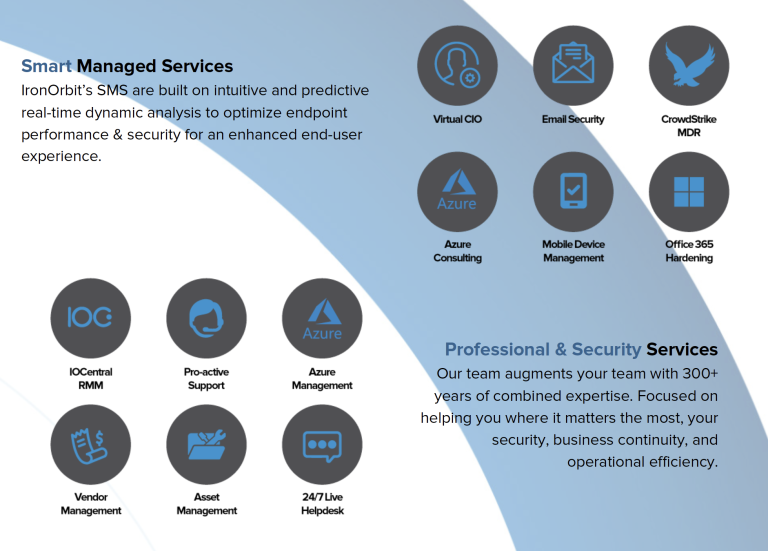True Digital Transformation is a process made from two stages, and the second stage builds on the first. The first stage enhances traditional products and services using digital technologies to become operationally excellent. Digitizing operations means a company does better than what it has always done before. This stage creates operational excellence through incorporating digital technologies and is much a cultural-way-of-thinking change as it is a change of technology. The second stage moves beyond traditional products and services and uses digital platforms to innovate and deliver brand new customer value propositions. Companies know they’ve reached this stage when they begin offering value to their customers that they’ve never offered before.
Why is digital transformation so important? And why is it so important for all companies to get started on the journey on the right foot?
These are unprecedented times and businesses need a powerful elixir to get us through the immediate disruptions and also sustain us through the years ahead. That elixir is a digital transformation. Digital technologies are raising the bar for everyone across the board. Jeanne W. Ross’ important book DESIGNED FOR DIGITAL, explains digital technologies as a game-changer because it delivers ubiquitous data, unlimited connectivity, and massive processing power.
Ubiquitous Data
Businesses no longer have to guess what customers want or how they want it. We can now collect the data and see the answer in front of us.
Unlimited Connectivity
Mobile devices give us access to anything digital and anywhere there’s an internet. Responses to inquiries come immediately, and smartphone apps offer proactive insight into customer problems.
Unlimited Processing Power
We expect massive computing power to crunch all that ubiquitous data and arrive at conclusions human beings cannot readily observe.

Jeanne W. Ross, the Principal Research Scientist at the MIT Sloan Center for Information Systems Research, paves the way for business leaders who want to retool their organizations for digital success in her book DESIGNED FOR DIGITAL..
Why is digital transformation important? Well, imagine, there you are, with your old company infrastructure, bogged down with the antiquated silos and dysfunctional systems. These things were good enough for yesterday but not good enough for tomorrow. All around you are your competitors and customers swimming in the sea of digital technology. How long will it be before your responses, as fast as they might be, are not fast enough, and your competitors are proactively serving your clients because they have already collected massive amounts of data (compliments of digital technology) and have made sense of it (unlimited processing power in action)?
“Not all companies are digital-born, but all must offer customers new digital value propositions, or risk disruption from those that will.”
— Meg McCarthy, VP, CVS
Customers and competitors aside, a successful digital transformation means that your company will learn and progress more quickly than before. Once in the digital environment, thinking begins to change, you discover new possibilities and new ways to bring value to your customers. What is more, you’ll be able to try it immediately. You can afford to experiment because the company will have greater agility. Most importantly, being digital will establish closer connections with your employees, customers, and suppliers.
Like all journeys, digital transformations begin with taking the first few steps. These first steps are a part of digitizing operations. The way a company takes these first few steps is critically important. Keep this in mind: each step forms a building block for the next, and the one after that. If one of your previously laid building blocks has a crack in it or is unstable in any way, the whole thing could collapse, or you’ll get to the half-way point and realize you can’t build any further. The structure won’t hold.
We’ll point out the key benchmarks for the digitizing process a bit later, but now let’s look closer at the current technology environment and what it means to your business.
A PERFECT STORM
Forces of disruption and upheaval have converged on businesses throughout history, but never quite like this. Many companies, with their back pressed against the wall trying to survive, are feeling the tremendous build-up of pressure. It’s like the rise of air pressure just before a tornado strikes.
The pandemic and its subsequent lockdowns have been a crisis for most companies and an opportunity for others. They have also been an added force behind a group of disrupters that began building up steam a decade earlier. This group of disruptors has been collectively referred to as SMACIT – a term that feels appropriately like a slap in the face. SMACIT refers to Social Media – Mobile Devices – Analytics – Cloud – Internet-of-Things. Like many disruptors, this collection of technologies brings both crisis and opportunity. Margaret Rouse points out in her Techtarget Network article on SMACIT, that these phenomena form the basis for an ecosystem that enables a business to transition from e-business to a digital business. SMACIT is an enabler. It is also the catalyst paving the way for an incredible multitude of things any one of them having the ability to disrupt your business.
From a consumer perspective, we have become so enmeshed with digital technology that we don’t even think about it. It is just something we expect. Amazon Prime subscribers pay their $15 a month and don’t think about it. They enjoy the convenience of ordering online and receiving their shipment the next day. But remember, Amazon didn’t start as a digital company. They started as an online bookseller.
Gone are the days of the stereotypical socially awkward IT professional hunkered silently over his workspace and not talking to anyone outside of IT. Today’s IT professionals must interface with a variety of people across all departments of an organization because information technology and business goals have become so interwoven. Plus, the technology environment has become too complex and sophisticated that IT teams must become more conversant with business outcomes.
Having your employees work from home doesn’t make you a digital company. Digital companies deliver digital offerings — value propositions that could only exist in the digital realm. The book DESIGNED FOR DIGITAL makes the distinction between digitizing operations and becoming a fully fledged digital company. Digitizing is achieving operational excellence. Doing things that you’ve always done, but now you’re doing them better. Becoming digital means offering brand new value propositions to your customers. What problems can you solve for your customers that you never considered before.
“Business executives who think they are leading a digital transformation when they are digitizing may achieve operational excellence on an outdated value proposition. This may elevate competitiveness in the short term, but it’s not likely to lead to digital success. Consider the limitation of being the best taxi company in town when Uber and Lyft arrived on the scene.”

Traditionally, business leaders created processes, systems, and data in silos.
These silos slow down the coordination with other parts of the business.
THE FINE ART OF DIGITIZING
What was once just a good idea is now a must-have. Properly digitizing your operations, and I stress the word “properly,” is a prerequisite to digital transformation. It’s a difficult process. It takes time and requires intercommunication between all departments throughout the company. Consequently, business leaders tend to skip steps, look for quick fixes, and make autonomous decisions that cause problems down the road. Unfortunately, this tends to be the rule and not the exception. Without involving people and processes across the entire organization, there is inevitably a costly disconnect and the digital transformation flies off the rails.
A Harvard Business Review article by Thomas H. Davenport and Thomas C. Redman, May 21, 2020, states that digital transformation is not for the faint of heart and that many such efforts fail. Success requires bringing together and coordinating a far greater range of effort than most leaders appreciate. The article, and the book, postulate the transformational journey has to begin with the people in the company.
It’s important to have leaders with good people skills leading technology, data, and processes. For example, in the area of data, you’ll need the ability to rally people at the front lines to adopt new roles as data creators, ensuring the processes are in place to capture data correctly.
People lead the discussion of rethinking the processes from the top down. Get rid of the silos that have built up over the years and nurture horizontal communication focused on serving the customers. The traditional hierarchical thinking of corporations is a real impediment to making any kind of lasting and substantive transformation.
During this “people and process” alignment, trust is developed between teams and communication opens up more between IT, DevOps, and upper management. Not only do internal technology people need to be great communicators, but they also need a keen understanding of how to balance technology and ROI.
Designing and implementing the right operational backbone is hard to accomplish. That’s why most companies don’t have one. Frequently, they become entangled in the complexities of their old legacy systems. Simplify the business and focus on key customer satisfaction points. Another important point to remember is that the operational backbone is a constant work-in-progress because you’ll be tweaking it as you gain more insights from your collected data. Nothing is etched in stone.
IN CONCLUSION (part 1)
SMACIT (see above) contributes to optimizing processes and operations. These digital technologies are essential to becoming a digital company. The goal of becoming digital is the ability to offer digital value propositions to your customers. Organizational change — the “people” part of the transformation, is the biggest challenge. As we close part one of this blog, we want to leave you with several useful questions raised in the book DESIGNED FOR DIGITAL.
“Is your company’s organizational backbone “good enough” to support your digital transformation? If so, are you continuously adopting new digital technologies, as appropriate, to update key systems and processes? If not, what are you going to do about it?”














